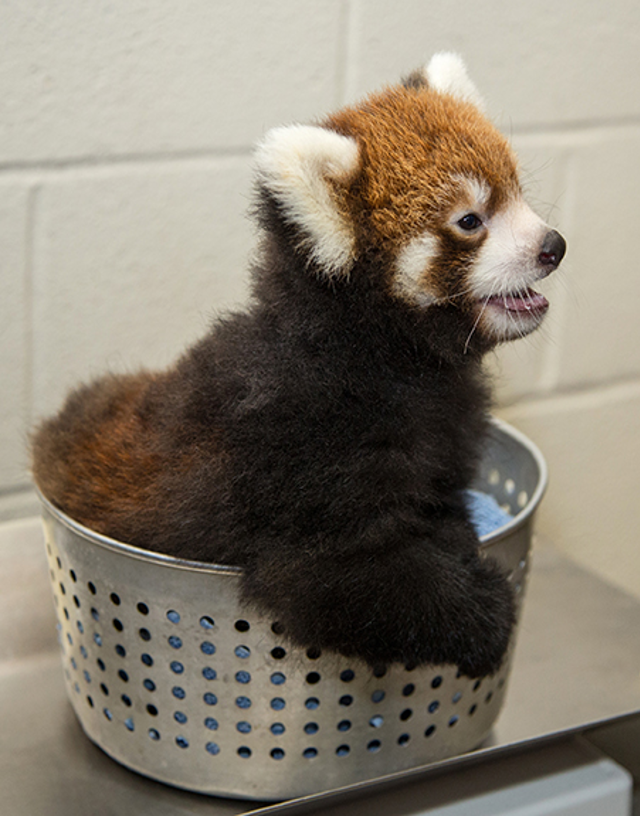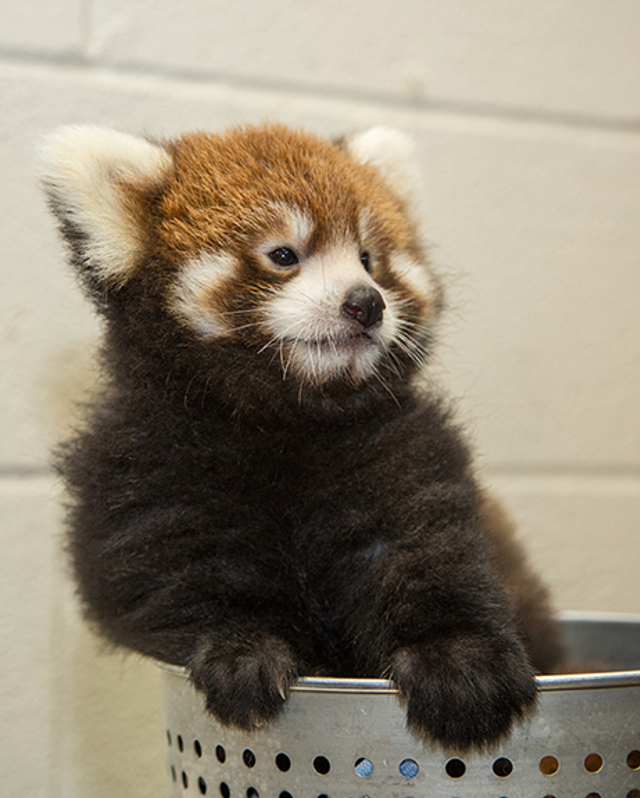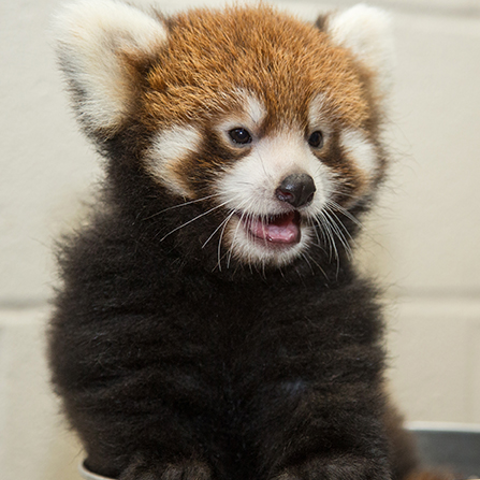We are thrilled to announce the birth of a red panda cub on July 3.
The female cub is doing well and bonding with her mother in their off exhibit den.Known for their teddy bear-like appearance and red fur, the red panda is native to the mountains of Central China, Nepal and northern Myanmar (Burma). They are considered vulnerable to extinction due to habitat destruction. In addition, slow rates of reproduction and high infant mortality rates make it very hard for this species to rebound from population declines.
“Red panda mothers are very prone to stress and easily agitated, which could cause them to reject or unintentionally harm the cubs,” said Karen Rice, carnivore supervisor. “Because of the high infant mortality rate, we took every precaution possible to ensure the baby was delivered and cared for safely.’The female red panda needs to be made comfortable months prior to giving birth by “denning” her up in an area where she feels at ease.
“We anticipated a late June/early July birth so we denned up our female in May. She was confined in the building that she is used to and provided with a choice of nest boxes and most importantly – air conditioning!”
Animal care staff monitored her for signs of stress and added video cameras to her nest boxes so that they would know when she gave birth and could watch for important things, like the cub nursing and possible overgrooming by the mother, all without having to disturb them.
“After our female gave birth we made the decision to continue our hands-off approach since all was going so well. At one month of age, we did our first neonate exam and determined the cub to be female, in good health and weighing just under two pounds. The cub and mom both did well and were happily reunited right after.”
The Zoo’s two red panda adults are a part of AZA’s Species Survival Program, which manages the breeding of a species in order to maintain a healthy and self-sustaining captive population that is both genetically diverse and demographically stable. At about a year old, she will most likely leave Nashville Zoo to be paired with a mate for breeding.
If all continues to progress, the Zoo hopes to debut the cub this fall. Stay tuned for more details about her debut.





